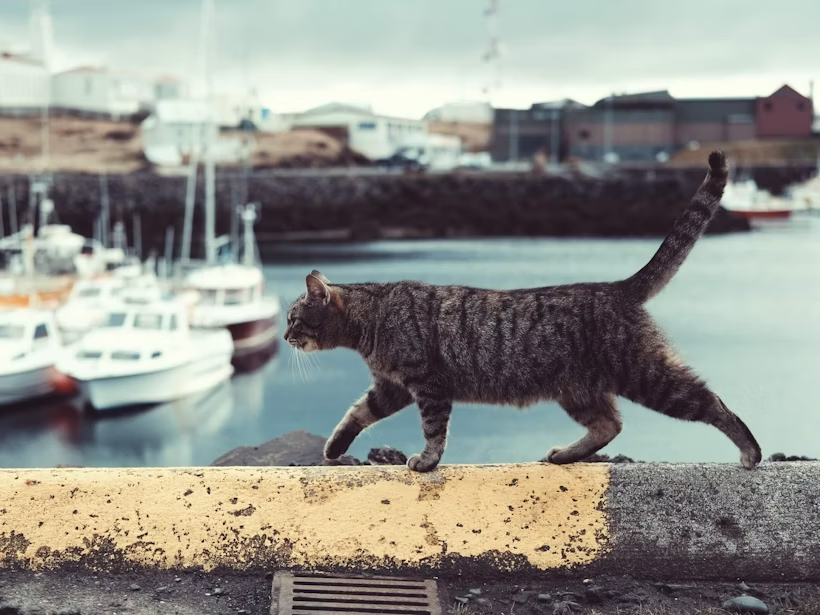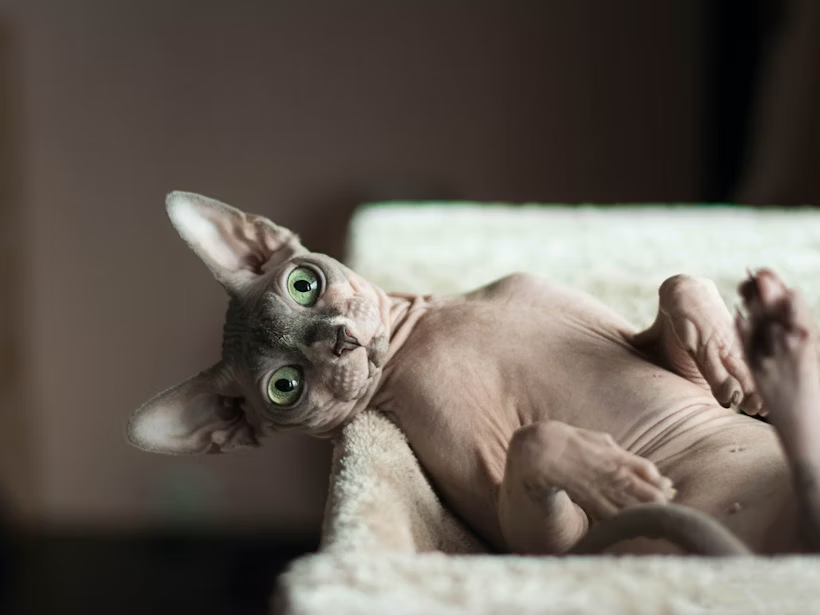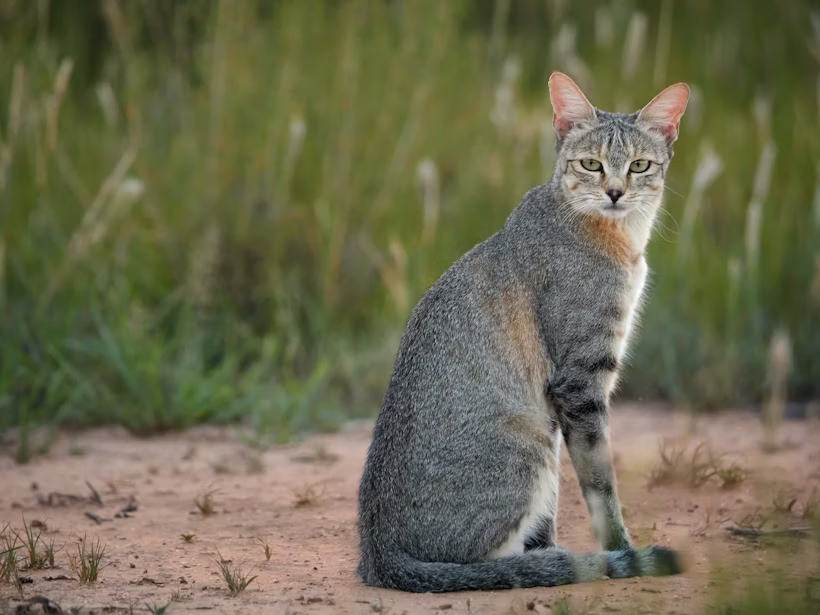There’s no question: Cats have left their mark on the world. You can find reference to them in folklore, pop culture, art, internet memes... nearly everywhere.
And though their impact is clear, we’re still piecing together the details of how the ancestors of modern domestic cats spread from Egypt and the Near East to the rest of the planet.
It’s fitting that such an enigmatic species should maintain some mystery about their past. But by combining feline genetic information with archeological and human historical records, researchers have begun to tease out the primary path cats likely took in their global conquest.
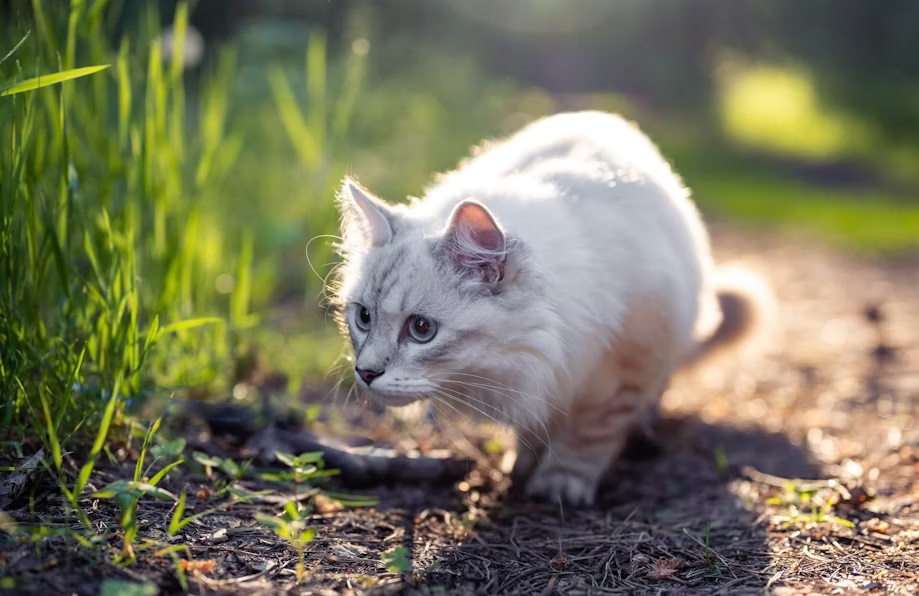
From farming roots to trading routes
In my last post, I shared how ancient wildcats likely adopted farming communities in the Fertile Crescent and started down a path toward domestication. But they didn’t stay put.
Experts believe the friendliest of the early domestic cats spread as agricultural practices did—expanding northward and westward into Bulgaria and Romania. Following the presumed second wave of feline domestication in Egypt, these cats expanded through the Mediterranean during Roman times, mixing with the Near Eastern cats before continuing up through the Baltics. And between the fifth and 13th centuries, they migrated further into Europe and Asia.
Note: Cats may have arrived in Asia earlier based on their genetics and the history of trading networks. Researchers are actively working to establish the most accurate timeline for the domestic cat’s expansion into various parts of Asia.
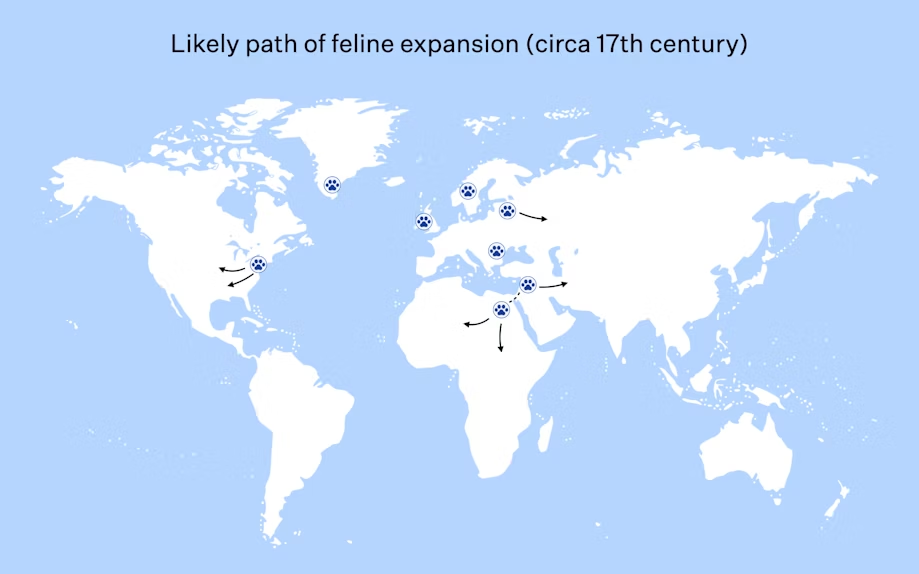
On oceanic expeditions with the Vikings
Because the ancient domestic cat tended to hang close to humans and join them on old-world trading routes, we can track their movement over time. For example, cats evidently shared homes and even sailed with Vikings as mousers (and, at times, a source of fur).
Fun fact: After arriving in Norway around 1000 AD, these cats likely interbred with longer-haired cats introduced by crusaders in the 14th century—resulting in the modern-day Norwegian Forest Cat.
It seems that cats were actually a significant part of Viking culture. For example, the mythical Norse goddess of love and fertility, Freya, traveled in a chariot drawn by two powerful skogkatt (which translates to “forest cat”). As such, treating cats well would earn you good will with the goddess, according to Viking legend.
Archaeological and genetic evidence suggests Vikings brought cats on raiding expeditions to Greenland and Scandinavia (including what is now Northern Germany)—where they had a measurable impact. For instance, they likely introduced the longhair gene into the Manx population on the Isle of Man in the Irish Sea, creating what we recognize today as the Cymric breed variation.
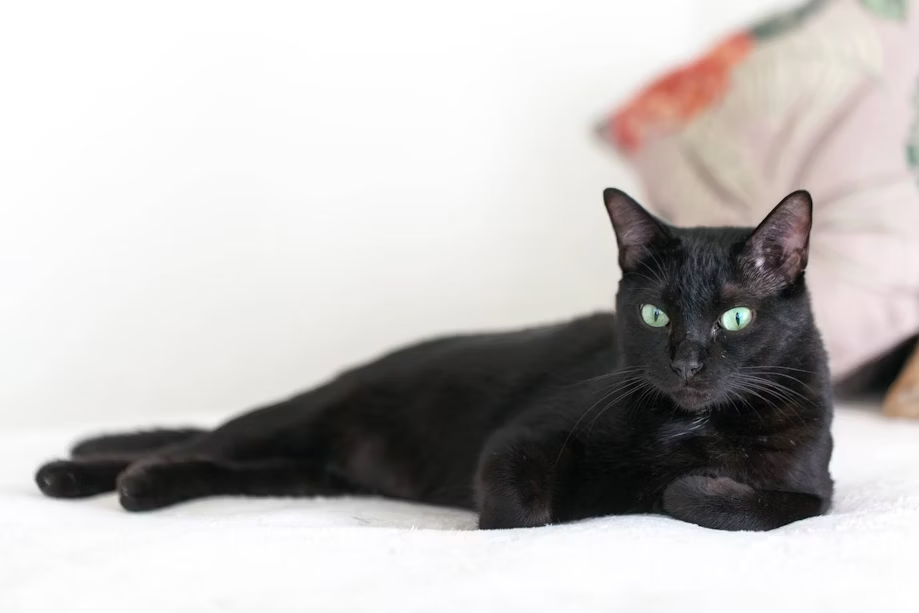
From the Dark Ages to the New World
Though domestic cats had many high points in history, they also shared sweeping lows. The Middle Ages, in particular, were not kind to cats. People in Europe at that time commonly associated cats with heretics, witches, and the devil. And sadly, many cats were killed in an effort to ward off “evil.” Scholars think this (ironically) may have contributed to the spread of the rat-driven plague.
But as we know, cats survived—persevering long enough to travel with early European colonists to the Americas. And once there, they again served as pest controllers and, eventually, companions.
Fun fact: Cats were one of the first animals the U.S. Army employed to help protect the military provisional stores.
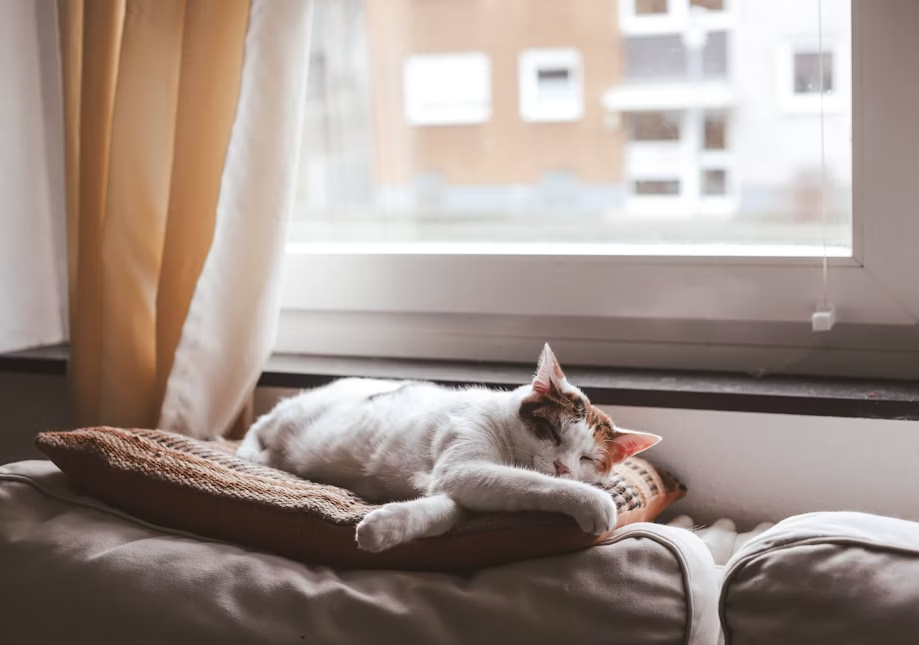
Reaching the final destination: Your home
During the Age of Enlightenment, people began to question many beliefs of the past—including one that cats were merely a “necessary evil.” But it wasn’t until the 18th century that cats became the pampered household pets we know today.
Even now, in their place of privilege, domesticated cats have an irrepressible hunting instinct. In fact, studies suggest house cats are only semi-domesticated since, thanks to this strong instinct, they can survive in the wild. Another compelling piece of genetic evidence? They’re capable of procreating with certain wild cats and producing hybrid offspring.
Such hybridization has resulted in breeds such as Bengals, Savannahs, and Chausies. Due to their disposition—and other challenges surrounding early generations of wild-domestic hybrids—only later generations typically become pets.
Wondering where your cat came from?
See what their family tree may have looked like and screen for 70+ breeds and populations with the world’s most comprehensive cat DNA test.
Explore Complete